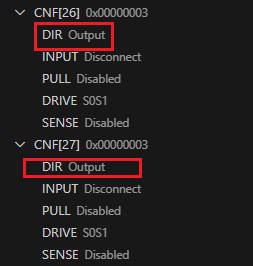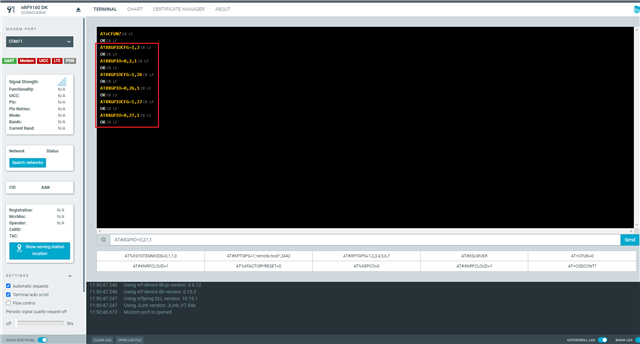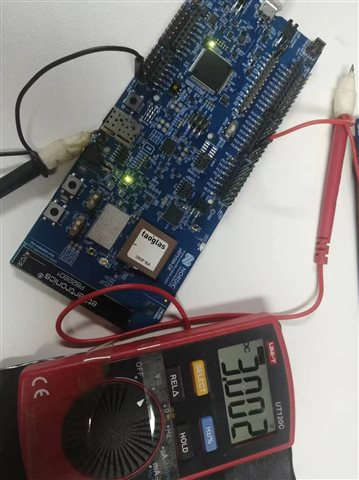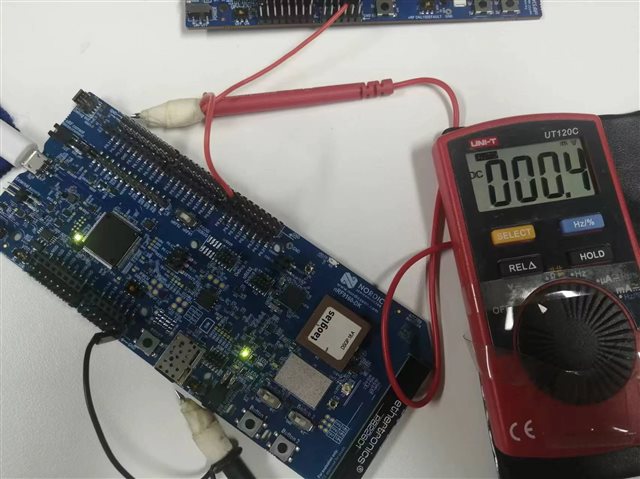Hi,
1. In ncs v2.6.0 example serial_lte_modem, the level of the P0.26 P0.27 I/O port on the PCA10090 DK board is measurement 0V or 0.8V . Set the high level, normal should equal the VDD voltage 3.0V ,What causes the inconsistent external measurement voltage after the AT instruction is set here?
2. The following changes were made: Cut DK slats SB11 SB12 To modify the serial_lte_modem routine, remove the RTC CTS port with port P0.27P0.27 as the serial port, and disable serial flow control.
3. The command is as follows:
AT#XGPIOCFG=1,26
AT#XGPIOCFG=1,27
AT#XGPIO=0,26,1
AT#XGPIO=0,27,1
4.debug View the configuration of the GPIO0 register as follows:


Thank you for all your assistance.
Kind regards,
Peter.Min






